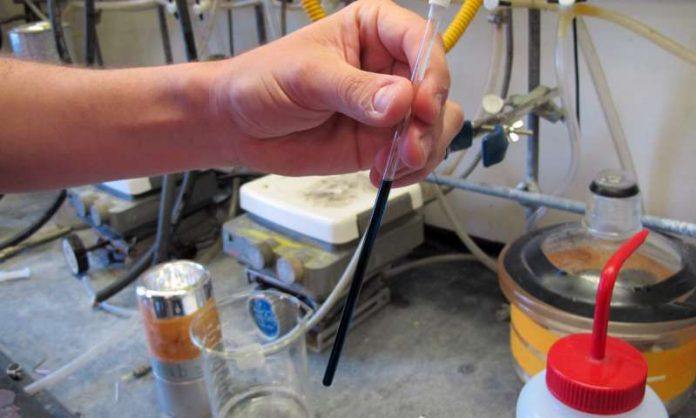We all know carbon-based molecules have unique bonding properties. Carbon makes covalent bonds with more than four other atoms, including other carbon atoms. Carbon-based molecules have three general types of structures like a straight chain, branched chain, ring.
Many carbon-based molecules are made of many small subunits bonded together like monomers and polymers. There are four main types of carbon- based molecules are found in living things. They are carbohydrates, lipids, proteins and nucleic acid. They are also called as organic molecules.
Scientists from the University of Oregon incorporates a new carbon-based molecule. This carbon molecule is long-lasting and resistant. It can be used in solar cells and various electronic devices. As the magnetic critical state is heated, the molecule changes its bonding patterns.
After that, at room temperature, it returns fully bonded non-magnetic state. Those changes are done again and again without any decomposition. Still, in the appearance of heat and oxygen, it remains stable.
By referring to organic compounds, also known as open shell molecules, has two free flowing, nonbonding electrons. Using some techniques for producing them to control their electron revolutions.
Therefore, it provides semiconducting properties. The first synthetic biradical hydrocarbon was formed in 1907 in a heated state, which has been restricted due to its inconstancy.
Read Also: Airbus Carbon Fibre Plane
Gabriel E. Rudebusch, UO doctoral student said that “their goal was to make the organic solar cell more effective than silicon-based solar cells. The combination is very quick and effective. Scientists can make a gram of this compound very easily. It is very stable in the presence of oxygen and heat. According to scientists, “this stability is approximately silent of in the literature about biradical compounds.”
The molecular structure of this new molecule consists of hydrocarbon anthracene. It has three linearly fused hexagonal benzene rings mixture with two five-membered pentagonal rings.
Michael M. Haley, Professor of Chemistry and study co-author, said, “The big difference between our new molecule and a lot of other biradical molecules that have been produced is those five-membered rings. They have the inherent ability to accept electrons or give up electrons. This means DIAn can move both negative and positive charges, which is an essential property for useful devices such as transistors and solar cells. Also, we can heat up our molecule to 150 degrees Celsius, bring it back to room temperature and heat it up again, repeatedly, and we see no decomposition in its reaction to oxygen. The unique features of DIAn are essential if these molecules are to have a use in the real world.”
